Arteon poised to lead VW resurgence
By John Gilbert
It wasn’t a long trip, just a short jaunt on an interstate near Duluth, Minnesota, but immediately my wife, Joan, and I realized we had found something new to like about the car, beyond its great looks and refined interior comfort.
It was smooth. Not just non-bouncy smooth, but luxury-car smooth, as we headed up the North Shore of Lake Superior totally at ease and with an added blanket of security from that smoothness. A sort of quiet, uninterrupted feeling of a peaceful commute.
This is not to say that the Jetta, or Passat, isn’t smooth, but the 2020 Arteon is my new favorite in the whole VW array.
Volkswagen is in the midst of deciding on its variety of cars with which to try to pump up its numbers in the United States. We hear that the specialty GTI and Golf R will be coming in, but not the normal, garden-variety Golf. We are certain the Jetta will be sold here, and it has proven to be a popular, economical 4-door compact. The larger Passat also remains. Along with the various SUVs, Volkswagen seems to have all the angles covered, and the Arteon replaces the CC, which was a breakthrough with its 4-door-coupe styling a decade ago. The Arteon retains that same silhouette, covering a roomy rear seat and an enormous trunk..
VW also has provided some of the biggest news in the realm of auto shows, because it has shown frequent views of the Golf-e, VW’s new pure-electric vehicle that will take care of the zero-pollution end of it, and talk is that Volkswagen will build the EV at a new wing on the plant in Chattanooga, Tennesee.
The Arteon, however, has the chance to give the company a near-luxury sedan that can compete with anybody else’s full-luxury cars. With a 2.0-liter 3-cylinder, an engine with endearing popularity as the engine that makes the GTI the “hot hatch” icon of the industry.
Even though the Arteon is quite large and spacious, the potent little 2.0 can handle it. The test car, in a gleaming black that showed off its artistic grille in high-contrast perfection, has enough power to easily make the Arteon perform like a sporty sedan, even though your neighbors will be convinced you’ve gone upscale to a luxury car.
With direct injection and a turbocharger, run through steering wheel paddles is you want to shift the 8-speed automatic by hand, you are somewhat surprised that such a comfortable, roomy sedan can switch personalities in a flash. It also came with 4-Motion, Volkswagen’s highly efficient all-wheel-drive system, and you can play with the driving mode switch to set yourself up for economcal, or comfort, or sporty settings.
The electronic differential lock adds to your stability,. and there is an adaptive chassis control, and electro-mechanical power steering tightens up in the sport setting.
Big, 19-inch alloy wheels are mounted with all-season tires, and with all the contemporary stability and braking equipment, you feel well-prepared for winter driving as well. Inside, the 12-speaker, 700-watt digital Dynaudio Premium audio system keeps you entertained. Outside, LED lights cut sharp focus whether in the adaptive headlights, taillights or daytime running lights. Fully loaded, the Arteon moves up from $44,945 to $46,410.
The Arteon might be the aristocrat in VW’s stable when it rises in stature to U.S. buyers. There is an interesting battle going on right now in the government, because when President Trump, in his eagerness to turn back every positive step President Obama made, rolled back the startling legislation Obama attained, which requires automakers to improve fuel economy by 5 mpg each year until we’ve become the world’s vanguard in low emissions and high economy.
Trump’s rule reduces that demand from a 5-mpg improvement each year to 1.5 mpg. At least it’s something, but it’s a weak attempt at a compromise. It also might be an attempt to get automakers behind Trump for the next election, but it won’t do much for California voters, who are solidly behind the move to stick with the Obama-level improvement.
While California was operating within it’s rights to set state standards that are tougher than the national rule, 15 other states adopted the California plan — including Minnesota. Trump realized he had been snookered and would look bad trying to win as the Pollution President, ran through a law that prevents California from splitting off from the rest of the country.
Automakers, who are smart enough to realize they can make the same profit with less cost by Trump’s rule, sounded off behind the President. Those companies include General Motors, Toyota, Fiat-Chrysler, and Nissan.
No time for gloating, however, because California — joined by a posse that now numbers 23 states — filed a lawsuit to refute the National Highway Transportation Safety Administration in its attempt to prevent it from enforcing the stricter law. On top of that, last week, California announced that it would no longer be buying state vehicles from companies that do not adhere to California’s cleaner-air rule, and it would no longer allow any state agencies from such purchases.
That may sound like a kid’s game of “I got you last,” but consider that from 2016 to 2018, California bought $58.6-million in GM vehicles for state use, and $55.8-million worth of Fiat-Chrysler vehicles, plus $10.6-million Toyota vehicles. Those companies, in the midst of some tough times for automakers, will not absorb such losses easily.
Winners will be Ford, which supplies $69.2-million in vehicles, Honda, which supplies $565,000-worth of vehicles, and German companies such as Volkswagen and BMW.
The inclusion of Volkswagen in that group is ironic, because while it hasn’t been supplying vehicles to California’s state car pool, it certainly could, and it would represent a huge change from being the bad guy in the recent diesel-emission violation scandal to being a good guy building cars that meet standards the banned companies have chosen to say they can’t meet.
And once they settle into the firm but plush leather bucket seats of an Arteon, state officials might wonder why they hadn’t been buying them all along.


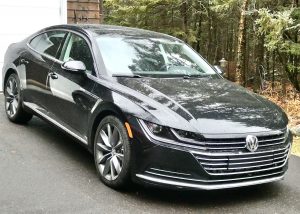
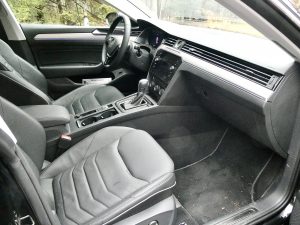
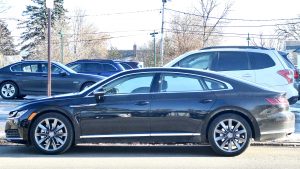
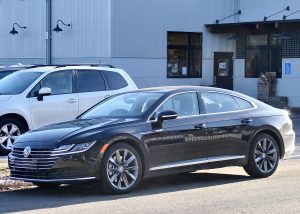
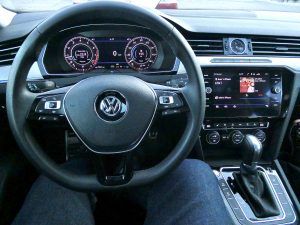
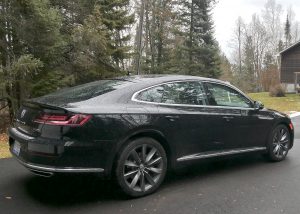
 John Gilbert is a lifetime Minnesotan and career journalist, specializing in cars and sports during and since spending 30 years at the Minneapolis Tribune, now the Star Tribune. More recently, he has continued translating the high-tech world of autos and sharing his passionate insights as a freelance writer/photographer/broadcaster. A member of the prestigious North American Car and Truck of the Year jury since 1993. John can be heard Monday-Friday from 9-11am on 610 KDAL(www.kdal610.com) on the "John Gilbert Show," and writes a column in the Duluth Reader.
John Gilbert is a lifetime Minnesotan and career journalist, specializing in cars and sports during and since spending 30 years at the Minneapolis Tribune, now the Star Tribune. More recently, he has continued translating the high-tech world of autos and sharing his passionate insights as a freelance writer/photographer/broadcaster. A member of the prestigious North American Car and Truck of the Year jury since 1993. John can be heard Monday-Friday from 9-11am on 610 KDAL(www.kdal610.com) on the "John Gilbert Show," and writes a column in the Duluth Reader.